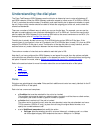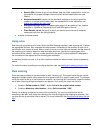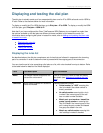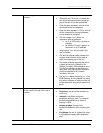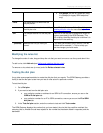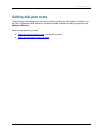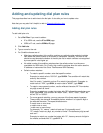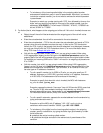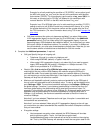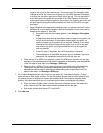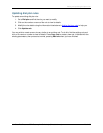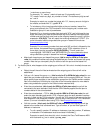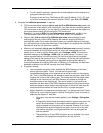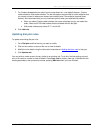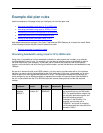
Adding and updating dial plan rules
Cisco TelePresence ISDN Gateway 2.1 Online help (Printable format) 27 of 135
Example: for all calls matching the condition of "55 (DDDD)", set an action to call
the MCU with name "my_mcu" and join the call to the conference with identifier
that matches "(DDDD)". For this example, type the action of my_mcu ! 00 $1. In
this case, an incoming call to "551234" will attempt to join conference with
numeric identifier "001234" on the MCU with the name "my_mcu".
Example: in an IP to ISDN dial plan rule, for calls matching a condition (D*)P(D*),
setting an action to call $1!$2 will match any numbers which have a '#' in, using
the number before the '#' for the phone number and the number after the '#' as
the TCS-4 extension. (For more information about using TCS-4 see
Example dial
plan rules)
o Call these numbers: this option only becomes available if you select Video using
H.221 aggregation (legacy) as the call type (for IP to ISDN calls) in the Additional
parameters section. Only use Video using H.221 aggregation (legacy) if you are
supporting legacy ISDN endpoints that need this feature. You must ensure you enter
the correct number of telephone numbers. For example, if you select 3 x 64kbps as
the call bandwidth, you must enter three telephone numbers here. Note that you can
use the same scheme of substitutions as described for Call this number.
6. Complete the Additional parameters, if required:
o Call type: Specify the type of outgoing call:
Telephone: if the call is a voice-only telephone call.
Video using BONDING (default): a "typical" video call.
Video using H.221 aggregation (legacy): only select this if you need to support
legacy ISDN endpoints that require n x 64kbps or n x 56kbps channels. This
option is only available for IP to ISDN calls
o Restrict (56k):(this is only for IP to ISDN dial plan rules) when selected, for calls
matching this dial plan rule the ISDN Gateway will make the outgoing ISDN call in
restricted 56k mode. Do not select this option unless your network requires it. Note that
for a call matching a rule that uses 56k mode, if the endpoint only supports 64k, the ISDN
Gateway will drop the call rather than use 64k.
o Maximum call bandwidth: optionally, select a maximum bandwidth for the ISDN part of
the call, which will otherwise be set to the default value. To view or edit the default value,
go to Settings > ISDN. The maximum bandwidth settings on the Settings > ISDN page
are global settings. Therefore, if you choose a greater setting in the dial plan than you
have as a global setting, the global setting will be used as the maximum value. For
example, if in the dial plan you choose to set 320kbps (5 x B channels) as the maximum
bandwidth and the global setting for maximum bandwidth for outgoing ISDN calls is
256kbps (4 x B channels), the maximum bandwidth available to the call will never be
more than 256kbps.
Note that if you have selected Telephone as the call type, this option is unavailable and
the bandwidth set automatically.
Note that if you have selected Video using H.221 aggregation (legacy) as the call type,
you must ensure you select a bandwidth that matches the number of telephone numbers
that you have entered.
o Encryption settings:
Use transparent encryption: when selected, the ISDN Gateway will simulate
point-to-point encryption. That is, it will set the encryption state
(enabled/disabled) used on the received call as that to be used on the outgoing
call. That is, the ISDN Gateway will attempt to match the encryption state for the



